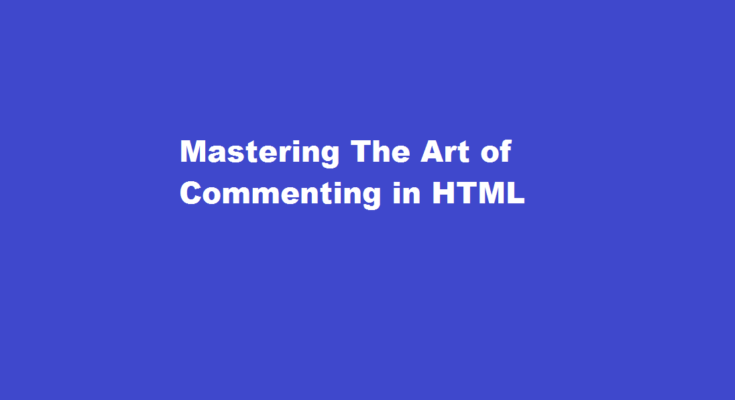Introduction
HTML comments are a powerful tool for web developers to add informative notes and explanations within their code. This article aims to guide beginners through the process of commenting in HTML, highlighting its significance, syntax, and best practices for effective commenting.
Why are Comments Essential in HTML?
Comments in HTML serve as annotations or reminders for developers, helping them understand their code and making it more readable. Comments are not displayed on the web page, making them an ideal way to document code without affecting the site’s appearance or functionality. Additionally, comments are valuable when working in a team, as they enhance collaboration and facilitate code maintenance.
Syntax and Placement
HTML comments are encapsulated within the “<!–” and “–>” delimiters. They can be placed virtually anywhere in the HTML document, allowing developers to add comments at appropriate locations. For instance, comments can be inserted to explain complex code segments, describe the purpose of specific elements, or temporarily disable certain sections for debugging purposes. It is essential to avoid placing comments within self-contained tags, such as <img> or <br>, as they may cause parsing errors.
Best Practices for Effective Commenting
- Be concise Keep comments brief and to the point. Avoid unnecessary verbosity that might hinder code readability.
- Be clear and descriptive Clearly explain the purpose of the code or element being commented. Use descriptive language to ensure other developers can easily understand the comment’s intent.
- Maintain consistency Establish a consistent commenting style throughout your codebase. Choose a format and stick to it, whether it’s a single-line comment or a multi-line comment.
- Avoid redundant comments Ensure your comments provide additional value and avoid duplicating information that is already evident from the code itself.
- Update comments regularly Comments can become outdated as code evolves. Make it a habit to review and update comments whenever necessary to reflect changes or improvements.
- Comment troubleshooting steps If you encounter an issue or a workaround in your code, document it in the comments. This helps in debugging and troubleshooting in the future.
- Respect code readability Place comments where they enhance code comprehension. Avoid cluttering your code with excessive comments that may hinder readability.
FREQUENTLY ASKED QUESTIONS
How do you write a comment for HTML?
To leave a comment in HTML, place a <! — tag before the code and a –> tag after the code that you want to hide.
How do you comment easily in HTML?
Comments in HTML start with <! — and end with –> . Don’t forget the exclamation mark at the start of the tag! But you don’t need to add it at the end.
How many types of comments are there in HTML?
Types of HTML Comments: There are three types of comments in HTML which are: Single-line comment. Multi-lines comment. Using <comment> tag.
Conclusion
Mastering the art of commenting in HTML is crucial for web developers aiming to improve code readability, collaboration, and maintenance. By adhering to best practices, developers can ensure that their comments are concise, descriptive, and relevant. Effective commenting can significantly enhance the efficiency of development teams, streamline debugging processes, and make code more accessible for future modifications. So, next time you write HTML code, remember to add comments that will not only benefit you but also help fellow developers understand and navigate your work.
Read Also : A Comprehensive Guide on Compressing PDF Files Efficiently



